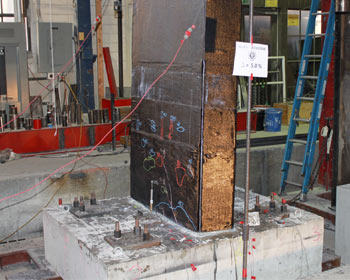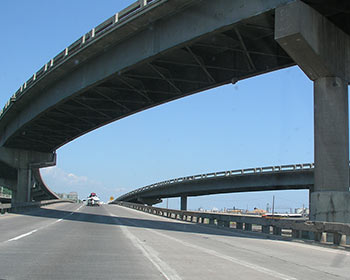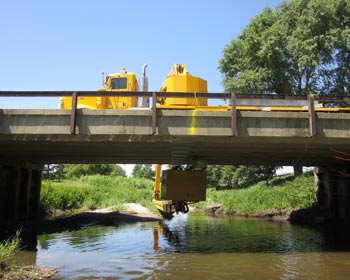MPC
MPC Bridge Research Published
Posted: Feb 25, 2021
Several papers from MPC-funded research projects were recently published. They include the following:
 "Seismic repair of deficient and code compliant bridge wall piers" was published in the April 2021 edition of Engineering Structures. Authors are Bhaskar Kunwar, Vanessa McEntee, and Chris P. Pantelides at the University of Utah. Reinforced concrete bridge wall piers constructed using older codes perform inadequately during strong earthquakes because of several deficiencies. The research showed that repairs using steel bars and carbon fiber-reinforced polymer rods and anchors increased initial stiffness, load carrying capacity and hysteretic energy dissipation of damaged wall piers.
"Seismic repair of deficient and code compliant bridge wall piers" was published in the April 2021 edition of Engineering Structures. Authors are Bhaskar Kunwar, Vanessa McEntee, and Chris P. Pantelides at the University of Utah. Reinforced concrete bridge wall piers constructed using older codes perform inadequately during strong earthquakes because of several deficiencies. The research showed that repairs using steel bars and carbon fiber-reinforced polymer rods and anchors increased initial stiffness, load carrying capacity and hysteretic energy dissipation of damaged wall piers.
The work was based on MPC project 526 "Seismic Repair of Concrete Wall Piers Using CFRP Active Confinement." A final report and a webinar from the project are available.
 "Bayesian Updating of Bridge Condition Deterioration Models Using Complete and Incomplete Inspection Data" by Min Li and Gaofeng Jia at Colorado State University was published in the American Society of Civil Engineering's Journal of Bridge Engineering. Deterioration models for estimating the time that a bridge or bridge component stays in a specific condition can guide decision-making on bridge maintenance and preservation. The researchers developed a Bayesian framework for calibration of statistical deterioration models and for selection of the best deterioration models. The framework allows incorporation of both complete and incomplete inspection data, and will lead to improved deterioration models and bridge preservation.
"Bayesian Updating of Bridge Condition Deterioration Models Using Complete and Incomplete Inspection Data" by Min Li and Gaofeng Jia at Colorado State University was published in the American Society of Civil Engineering's Journal of Bridge Engineering. Deterioration models for estimating the time that a bridge or bridge component stays in a specific condition can guide decision-making on bridge maintenance and preservation. The researchers developed a Bayesian framework for calibration of statistical deterioration models and for selection of the best deterioration models. The framework allows incorporation of both complete and incomplete inspection data, and will lead to improved deterioration models and bridge preservation.
The paper was based on MPC project 536, "Development of Age and State Dependent Stochastic Model for Improved Bridge Deterioration Prediction."
 "Methodology for Load Rating of Damaged Double-Tee Girder Bridges" was published in the January issue of the American Society of Civil Engineering's Journal of Bridge Engineering. Authors were Sandip Rimal, Brian Kidd, Mostafa Tazarv, Junwon Seo, and Nadim Wehbe at South Dakota State University.
"Methodology for Load Rating of Damaged Double-Tee Girder Bridges" was published in the January issue of the American Society of Civil Engineering's Journal of Bridge Engineering. Authors were Sandip Rimal, Brian Kidd, Mostafa Tazarv, Junwon Seo, and Nadim Wehbe at South Dakota State University.
Precast prestressed double-tee girder bridges, the most common type of bridge on South Dakota local roads, are deteriorating and may need replacement after only 40 years of service. Estimating bridge safe live loads, especially when the bridge elements are deteriorated, is challenging. The researchers developed descriptions of common damage types and conditions and then examined more than 370 inspection reports to determine the frequency of each damage type and condition state and to collect other bridge information. Two bridges were field tested and two 45-year-old girders were extracted from an actual bridge and tested to failure. Furthermore, an analytical study was performed to develop condition factors for double-tee girders with different sections, damage types, and condition states. Finally, a new load rating method was proposed for damaged double-tee girder bridges.
The work was based on MPC project 523, "Methodology for Load Rating Double-Tee Bridges." A final report of the project is available.

